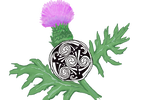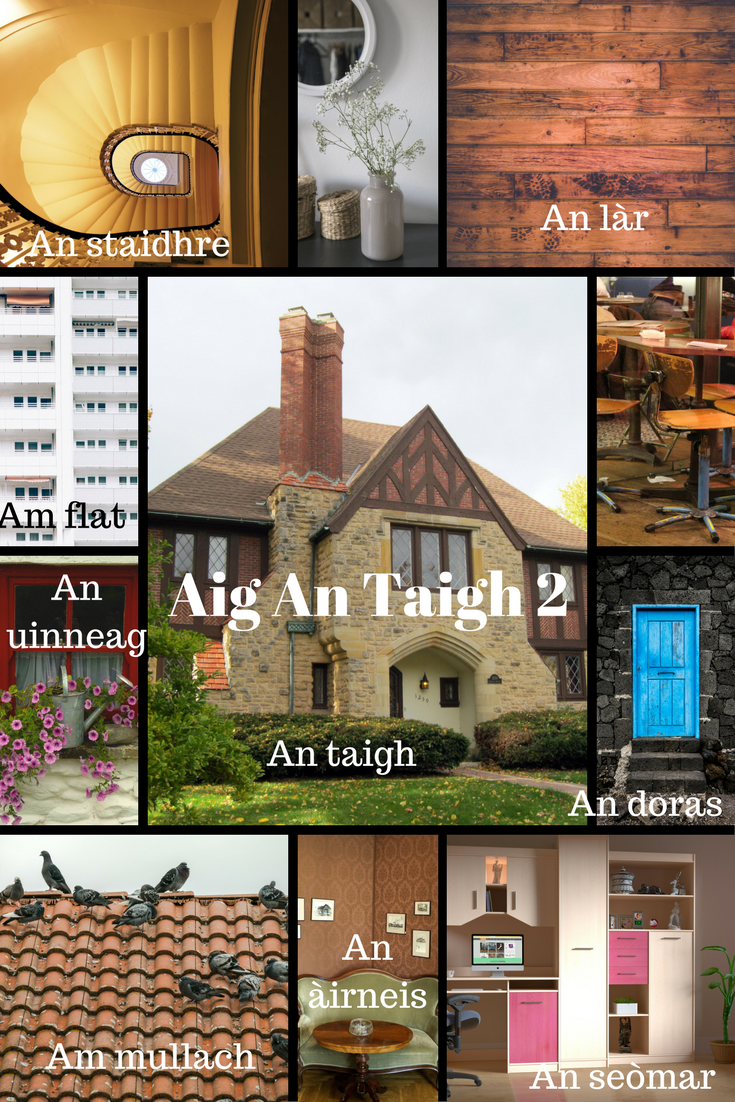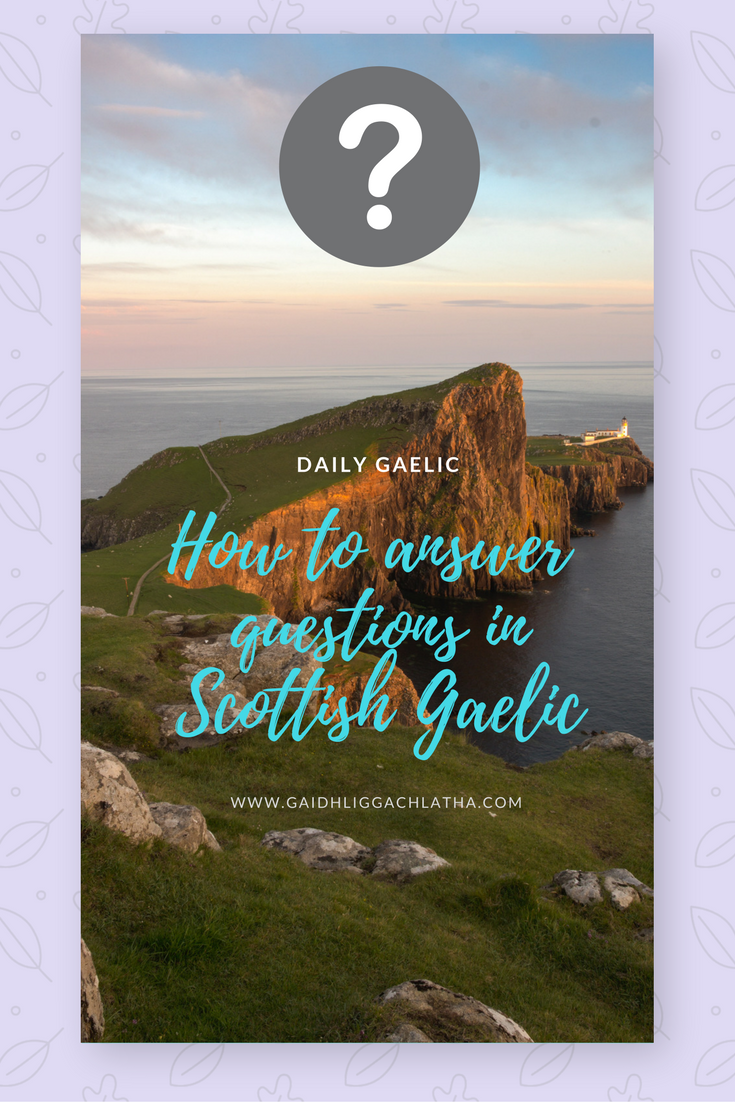|
An taigh (m) = la maison
Am flat (m) = l’appartement Dachaigh (f) = chez-soi, foyer Am mullach (m) = le toit An làr (m) = le sol An doras (m) = la porte An uinneag (f) = la fenêtre An seòmar (m) = la pièce, la chambre An àirneis (f) = le mobilier An staidhre (f) = les escaliers Tha mi a’ fuireach ann an taigh = j’habite dans une maison Tha mi a’ fuireach ann am flat = j’habite dans un appartement Tha mi a’ dol dhachaigh = je vais à la maison / chez moi Seo mo dhachaigh = voici mon chez-moi Thig a-steach ! = Entre ! Thigibh a-steach ! = Entrez !
0 Comments
Here are some helpful words around the house:
am bòrd. the table. This word is masculine so if you want to use an adjective it will look like this: am bòrd gorm. The blue table. a' chathair. the chair This word is feminine so if you want to use an adjective it will look like this: a' chathair phinc. The pink chair. an doras. the door. This word is masculine so if you want to use an adjective it will look like this: An doras geal. the white door. an leabaidh. This word is feminine so if you want to use an adjective it will look like this: an leabaidh bhog. the soft bed. an uinneag. the window This word is feminine so if you want to use an adjective it will look like this: an uinneag bheag. the small window.
Because English has only one verb 'to be' it can be hard for learners to figure out when to use 'tha' and when to use 'is'. Here are five tips to help you sort it out.
1. 'Tha' is for describing things. So colors, textures, sizes etc but also states of being ie what you are doing. Examples: Tha an cat beag. The cat is small. Tha an cù donn. The dog is brown Tha mi ag obair. I am working. 2. 'Is' equals. Is is for equating two nouns. So if you can write your sentence as an equation then you should use 'Is'. Examples: Is mise an tidsear. mise= teacher. (I am the teacher) Is Iain an saor. Iain = an saor. (Iain is the carpenter) 3. If your sentence starts with 'It is a ____' Use 'Is', but it is going to look like this: 'S e (Is e). And you will most likely follow this pattern: " 'S e _______ a th' ann. " put your noun in the blank space. Examples: 'S e bò a th' ann. It is a cow. 'S e truca a th' ann. It is a truck. 4. Talking about the weather. The tip here is that you can talk about the weather with both 'tha' and 'is' sentences and the trick is to have your whole sentence follow the 'tha' format or your whole sentence follows the 'is' format. Examples: Tha i brèagha. It is lovely. Tha an latha brèagha. The day is lovely. 'S e latha brèagha a th' ann. It is a lovely day. 5. 'S ann is also a form of 'is' and is often use for emphasis. If you want to emphasis things like location and time you can use 'S ann to emphasize this part of the sentence. This transforms a 'tha' sentence into a 'is' sentence. Example: Tha i à Alba. She is from Scotland 'S ann a Alba a tha i. It is from Scotland that she is. Chunnaic e Sìne an-dè. He saw Sìne yesterday. 'S ann an-dè a chunnaic e Sìne. It is yesterday that he saw Sìne.
Gaelic has no words for 'yes' or 'no'.
Coming from English, where we rely on yes and no for a lot of our conversation (especially 'no' if you are around toddlers) this sounds a bit alien. How can you get by with no 'yes' and 'no'? Here is a quick look at how it works.
Vous êtes francophones et l’apprentissage du gaélique vous donne parfois du fil à retordre?
Voici un petit article pour vous remonter le moral ! Il est bon parfois de se rappeler ce qui joue en notre faveur plutôt que le contraire. Et vous verrez que sur certains points, votre langue maternelle vous simplifiera la vie ! 1. La forme polie Le gaélique utilise également une forme polie. Comme en français, elle correspond à la 2e personne du pluriel.
Pour ceux qui peinaient à comprendre la différence entre les deux verbes faire de l’anglais « make » et « do », rassurez-vous, la question ne se posera pas en gaélique puisque, comme en français, on n’utilise qu’un seul verbe dans toutes les situations. (Ouf !)
3. Le pronom relatif En anglais, le pronom relatif « that » peut être utilisé ou omis :
4. La place de l’adjectif A quelques exceptions près, le gaélique place l’adjectif après le nom qu’il décrit. Voilà donc un effort de moins que vous aurez à fournir puisqu’ici encore, le gaélique est semblable au français.
5. Le genre des noms Et pour finir, les noms communs gaéliques ont un genre grammatical. Ils peuvent être soit masculins, soit féminins. Une particularité de plus à laquelle vous êtes habitués !
|
Details
AuthorsCaroline has been involved with Gaelic for more than 18 years. She has degrees in Celtic Studies and Gaelic Medium Teaching. Archives
March 2021
Categories
All
|
Proudly powered by Weebly






 RSS Feed
RSS Feed